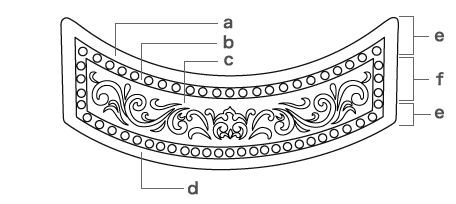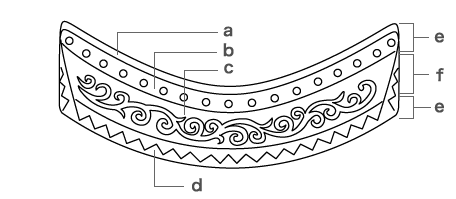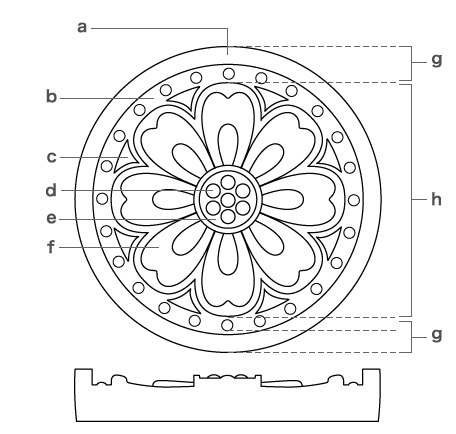| The section
of a pendant *gatou 瓦当,
outside the lotus flower motif, on a semi-circular eave end tile *nokimarugawara
軒丸瓦. The gaiku can be divided into the gaiku naien 外区内縁,
the inner band customarily decorated with a bead pattern *shumon
珠文, and the gaiku gaien 外区外縁, the outer band with a saw tooth pattern
*kyoshimon 鋸歯文
or a zigzag pattern *inazumamon 稲妻文 that decorates the rim. The rim *shuuen
周縁 is either raised with a flat surface, or slopes inward toward the border
line separating it from the bead pattern band shumontai 珠文帯. The
gaiku is not always divided into two separate bands. If not divided,
the entire area outside the boundary of the flower pattern is usually called
gaien. Note however, that some scholars prefer to call only the band
with the bead pattern gaien and the rim or periphery, with or without
decorative motifs shuuen. After the end of the Heian period,
the outer rim around the pendant tile, nokimarugawara, was usually
flat and undecorated. When the pendant is a broad concave eave end tile
*nokihiragawara
軒平瓦, the upper band is called joutai 上帯 and the lower band is designated
*shimotai 下帯. The
nokihiragawara also has side or end bands, called *sokutai
側帯, which generally have the same pattern as the upper and lower ones. |





